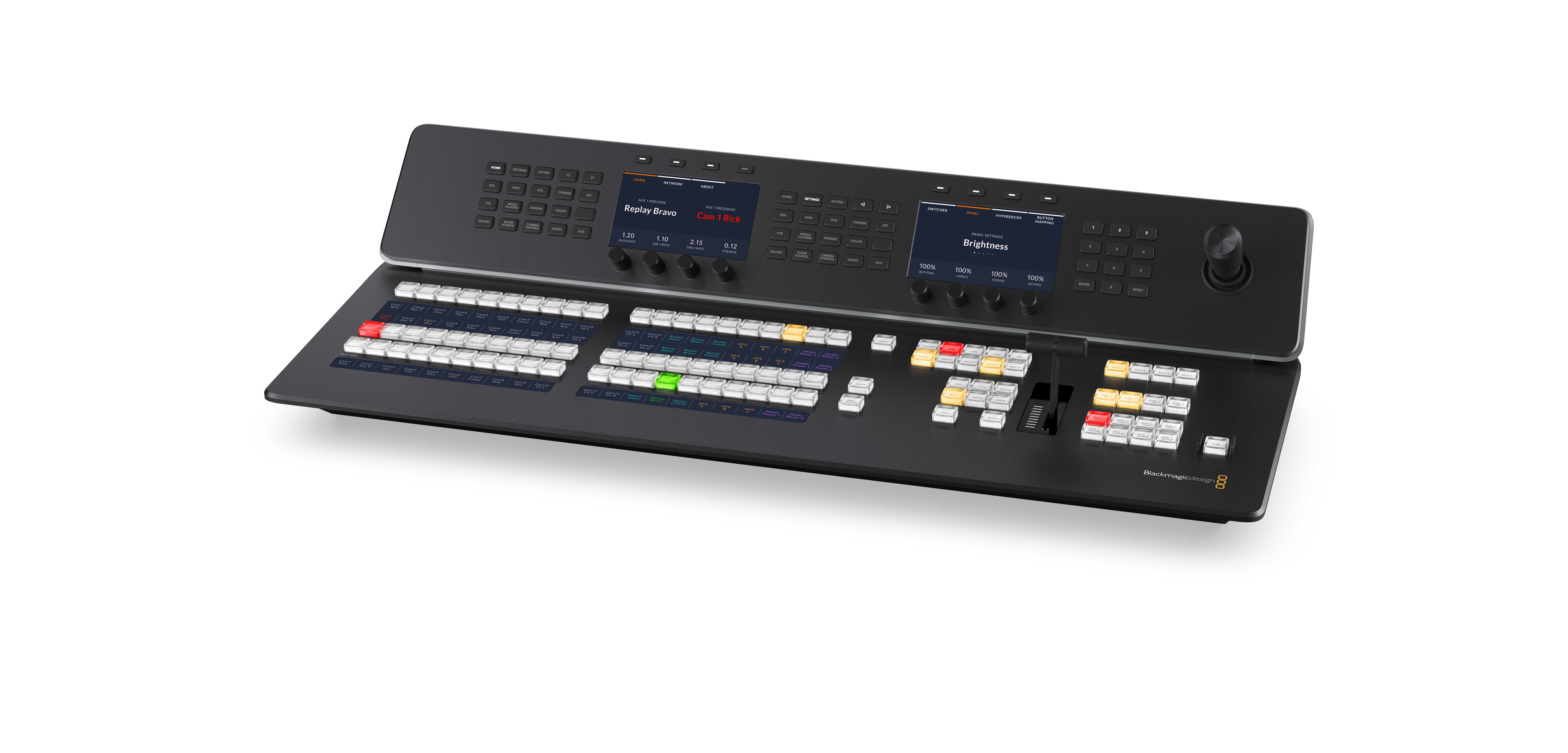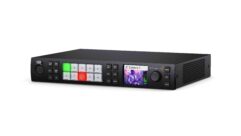
Loudspeaker System Design for Worship, Part 1
Apr 10, 2012 10:06 AM,
With Bennett Liles
Listen to the Podcasts
Editor’s note: For your convenience, this transcription of the podcast includes timestamps. If you are listening to the podcast and reading its accompanying transcription, you can use the timestamps to jump to any part of the audio podcast by simply dragging the slider on the podcast to the time indicated in the transcription.

From Sound & Video Contractor Magazine, this is the SVC Podcast Show 56 Part 1 with Jack Conners of Perfect World Studios. Show notes for the podcast are available on the web site of Sound & Video Contractor Magazine at svconline.com.
Just because it’s a small church doesn’t mean it can’t be a big job with three-second reverb time and no audio experts on staff. Jack Conners of Perfect World Studios used Tannoy QFlex speakers to make it all work for the Immaculate Conception Church in Traverse City, Michigan and he’s here to tell us how it went, coming right up on the SVC Podcast.
SVC: Jack, thanks for being here for the SVC Podcast from Perfect World Studios up in northwest Michigan. Perfect World Studios. That’s a mighty optimistic name. So, tell me a little about Perfect World Studios.
Jack Conners: We came from a song a friend of mine wrote and he was one of my first client’s when I first started recording and he had a song called “Perfect World” and it kind of stuck with the studio but in recording business basically we do a lot of location recording more so than studio recording. I don’t have a tracking room currently but I have a room that I use in town for tracking but do a lot of location recording, mixing and mastering here in the studio. But we do a lot of recording projects and we do live sound. I have medium sized system that we can do concerts events with. We also do design and installation of sound systems as well. [Timestamp: 1:39]
And what sort of church is the Immaculate Conception Church? What sort of worship style do they have there?
It’s a traditional Catholic church so basically spoken word and they have a piano and organ and choir, rarely anything other than that so pretty typical traditional worship style—not contemporary or rock music or anything like that by any means. [Timestamp: 2:04]
OK and they’re in Traverse City Michigan.
Traverse City, yes.
And although it sounds pretty simple and straightforward, the usual church AV job I’ve found from talking to a lot of people on this, is that they don’t want the equipment to be visually intrusive, they usually have some pretty formidable acoustic problems and they want speech intelligibility so when you mix all of those things up, you’re got yourself kind of a challenge.
You do, yeah and this church is typical of that. The acoustics are—it’s a large rectangular cathedral with a very high ceiling and sloped ceiling, wood ceiling, stucco walls, tile floor so it’s quite reverberant and yeah, they were concerned about what are the speakers going to look like and these—the Tannoy QFlex that we put in are small and we got them in white. I mean they’re narrow columns, they’re 48 in. or more high but they blend in with the wall that is white and their shape actually mimics the stained glass windows that are behind the alter so that helps them blend in a little bit. They look like they fit in with the aesthetic a little bit better but you still get people who say they notice them but I think after a while they don’t notice them. [Timestamp: 3:19]
Yeah, I guess once they’ve been there and done one service they probably don’t even notice them anymore.
The main thing about them though is that I know there are a lot of steerable line arrays out nowadays. This was the first one I’ve ever put in but I was amazed at the amount of direct sound you get from the speaker whereas before with the ceiling cluster, the central cluster, way up high in the peak of the ceiling if you were more than two or three rows back you didn’t hear any direct sound you heard—practically all your sound was coming off the walls or the ceiling and with the QFlex system in there steered just to hit the pews it makes a huge difference and even if you’re three quarters of the way back it sounds like the speaker’s right in front of you. [Timestamp: 3:59]
Loudspeaker System Design for Worship, Part 1
Apr 10, 2012 10:06 AM,
With Bennett Liles

Yeah, you were talking about a central cluster being originally installed in there and you’ve got something like a three second reverb time in that place?
Yeah, 2.56—something like that. It’s pretty long and there was an old, probably put in, in the 60’s, Altec horns and woofers up there that they did a good job of putting sound out there but like I say by the time it reached the listener it was not coming from the speaker itself. [Timestamp: 4:28]
Yeah, coming from just about everywhere. So how did you go about deciding where you were going to put the speakers?
Like I said, this was my first experience with the steerable array and I got a lot of help from Tannoy. I have a good relationship Tannoy North America and also the rep on my marketing in Wadsworth, Ohio were very helpful. Marc Warling actually a guy I worked with from online and he has a lot of experience in live sound and rigging and speaker design and he helped me decide where to put them and which speaker model to use, which we used the 48’s—two of them, one on each side and then he also came up and helped me with the software since he’s experienced with it and I had—this has been my first time using it but Tannoy because of my relationship with the company and they’re such a great company to work with. And we put one on each side which was kind of nice because then the null point falls right in the aisles between—the pews are separated by a center aisle so the null point between the two speakers falls right in the center of the church. On either side there’s virtually no phasing problems with the array the way it is. [Timestamp: 5:39]
Now how was your timeframe on this? Was it kind of a hurry up in between services or did you have a little time to get it done?
Well, we had a bit of time because the center array that they were using central cluster was still active but we went in there on a Wednesday I think and finished up on Thursday morning so we were there a day and a half. We did a lot of prep work before, the director of maintenance at the church and I did all the—pre-wired everything so that when Marc got up here all we had to do, we had the cabinets already up and all we had to do was fire them up and program them. Marc was here for a day and then we came back the next morning and tweaked a little on it and made sure everything was right and so it went pretty quickly. [Timestamp: 6:24]
So when you talked to the church people about this and the kind of a system you were going to put in, sometimes there’s a little tech to non-tech translation to do, what were their concerns? I would think how it was going to look as well as how it would sound.
Yeah, they were concerned about that and basically they said make sure it’s white, first of all and then they were concerned about where it was going to be but I worked closely with the church maintenance fellow and we got an idea of how they were going to look and set them up there and they were pretty open to the idea of putting them in. They were pretty well convinced that it was going to be a great improvement over what they had and they understood—they had a lot of complaints about people who couldn’t understand the priest and poor coverage in the back of the room too. [Timestamp: 7:10]
And in most situations where they have intelligibility problems and they can’t understand the pastor, they just keep turning it up.
Yeah and that usually doesn’t help because it makes it bounce off the walls harder. [Timestamp: 7:22]
And do they have any volunteers to do any of the sound work there?
Well this system’s pretty set. They don’t really change anything on it they just turn their mic packs on and away they go. It’s pretty simple. They didn’t have a hearing assistance system either which we added as well, Williams Sound system, to give the hard of hearing—helping them out so they didn’t have that before either. [Timestamp: 7:44]
Well, that’s a whole can of worms in itself when you set up an assisted listening system. That’s not the kind of thing that most of your churches would come up with until they have to deal with complaints from those with hearing difficulty and they realize that they’ve got to come up with something besides just acoustic throw.
Yeah there was a particular parishioner in this church who I know and he said that he would always sat in the second row and he never heard hardly every third word the priest said, he knew what he was saying and then he went back after this system was installed and he said that the first time in 20 years he heard the whole message and had no problem hearing it now. [Timestamp: 8:21]
All right, well it sounds like it was certainly an interesting job because even in the smaller churches you can get into some real acoustic situations and working in assisted listening with that. In Part 2 we’re going to be getting into the microphones, mixer, amplifiers, choir reinforcement so there’s a good bit still to come but Jack Conners from Perfect World Studios thanks for being here for Part 1 and we’ll be seeing you again.
Thank you.
Thanks for joining us for the SVC Podcast with Jack Conners of Perfect World Studios. Show notes can be found on the website of Sound & Video Contractor Magazine at svconline.com. Be back for Part 2 with Jack as he takes us into mics, the mixer and choir reinforcement at the Immaculate Conception Church, next time on the SVC Podcast.










